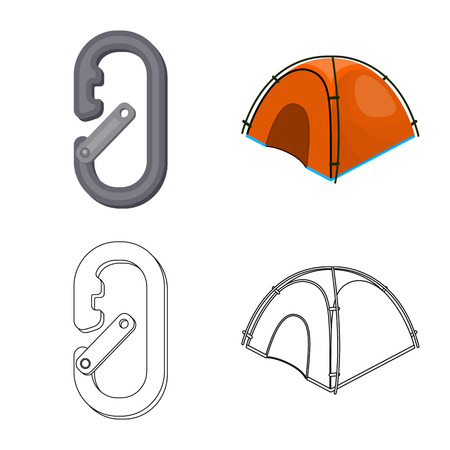Understanding UK Camping Weather
If you have ever camped in the UK, you will know that the weather has a reputation for being unpredictable at best. Even during the height of summer, British campsites can experience sudden downpours, persistent drizzle, or even the occasional chilly gust. The countrys maritime climate means that rain is never far away, and this is particularly true in popular camping regions such as the Lake District, Wales, or the Scottish Highlands. The ground rarely gets a chance to fully dry out, so mud becomes an almost inevitable companion on many trips. For campers, this means packing with wet and muddy conditions in mind isnt just wise—its essential. Unlike in some countries where you can rely on days of sunshine, here youll need to be ready for anything from misty mornings to soggy afternoons. Embracing this reality is key to making your camping experience enjoyable and hassle-free.
Essential Waterproof Gear
The unpredictable British weather is notorious for transforming a sunny morning into a soggy afternoon with little warning. For campers, investing in reliable waterproof gear is not just sensible—it’s essential. The following recommendations cover the key clothing and accessories you’ll need to stay dry and comfortable on UK campsites, whether you’re braving the Lake District or pitching up in the Scottish Highlands.
Waterproof Clothing: What to Look For
When selecting waterproof clothing, look for garments labelled as “fully waterproof” rather than simply “water-resistant.” Features such as taped seams, storm flaps, and adjustable cuffs are vital to keep rain out. Breathability is also crucial—British rain is often accompanied by mild temperatures, so opt for materials that let moisture escape.
| Item | Recommended Features | UK-Focused Tips |
|---|---|---|
| Jacket | GORE-TEX or similar membrane, adjustable hood, long cut | Pit zips useful for ventilation during hill walks |
| Trousers | Full-length zips, reinforced knees & seat, elasticated waist | Packable trousers are handy for sudden showers |
| Overtrousers | Lightweight, easy to slip on over boots, taped seams | Choose ones with ankle zips to avoid muddy hands |
Boots: Keeping Your Feet Dry and Stable
Mud is part and parcel of the UK camping experience. Invest in high-quality walking boots with a waterproof lining (such as GORE-TEX) and deep tread soles for grip on slippery ground. Wellies can be practical on particularly boggy sites but may lack support for longer treks.
| Footwear Type | Main Benefit | Ideal Use Case |
|---|---|---|
| Walking Boots | Ankle support, all-day comfort, waterproofing | Hiking trails, variable terrain |
| Wellies (Wellington Boots) | Total water resistance, easy cleaning | Soggy fields, short walks around camp |
| Gaiters | Keeps mud/water out of boots and trousers | Boggy paths and deep puddles on moorland campsites |
Accessories: Small Items That Make a Big Difference
- Poncho: A lightweight poncho can double as a groundsheet or emergency shelter.
- Waterproof hat: Wide-brimmed hats offer extra protection against driving rain.
- Dry bags: Essential for keeping clothes and electronics dry inside your rucksack.
- Gloves: Waterproof gloves prevent cold, wet hands when setting up camp or handling wet kit.
- Socks: Merino wool or synthetic socks dry faster and insulate even when damp—consider packing spares.
If you prioritise these essentials and adapt them to suit the particular site and season, you’ll be well prepared to face whatever the UK skies throw at your campsite adventure.

3. Smart Tent Choices and Setup
Selecting the right tent is your first line of defence against Britain’s unpredictable weather. Look for tents labelled as “waterproof” rather than just “water-resistant”, and check for a hydrostatic head rating of at least 3000mm. This rating indicates how well the fabric can withstand heavy downpours typical of UK campsites. Equally important are robust, sealed seams and a durable groundsheet—preferably one that is bathtub-style to prevent water ingress from the sides.
When you arrive at your site, take time to choose your pitch wisely. Aim for higher ground where possible, away from natural dips or hollows that could quickly become muddy puddles. Avoid pitching directly under trees; while they may offer some shelter from rain, dripping branches can prolong dampness and falling debris can damage your kit. Always lay down a footprint or groundsheet beneath your tent—this simple step adds an extra layer of protection against both mud and moisture.
Pay close attention to how you orient your tent. Position the entrance downhill if rain is forecast, allowing any water run-off to flow away from your sleeping area. Make sure guy lines are taut and well-staked to keep the flysheet clear of the inner tent, maximising airflow and reducing condensation inside. Finally, pack an old doormat or towel to leave by the entrance; this will help keep mud outside where it belongs, making life inside your tent much more comfortable after a wet day in the British outdoors.
Packing Techniques for Wet Environments
Preparing for the unpredictable British weather means adopting smart packing strategies to keep your kit dry and functional. Whether you’re trekking across the Lake District or pitching up in a soggy corner of Snowdonia, having robust methods in place can make all the difference between a comfortable trip and a damp disaster. Below are practical approaches and tried-and-tested hacks tailored to UK campsites:
Drybags: The Gold Standard
Drybags are invaluable for British camping. Opt for various sizes to separate clothing, electronics, and food supplies. Roll-top closures provide excellent waterproofing, but double-check seams for durability—cheaper models may fail when you least expect it. For extra security, use a drybag liner inside your rucksack.
Layered Protection System
A clever method is to create layers of protection inside your pack:
| Layer | Purpose | Recommended Materials |
|---|---|---|
| Innermost | Direct water barrier for valuables/clothes | Heavy-duty drybags |
| Middle | Secondary shield against leaks | Bin liners or rubble sacks |
| Outermost | Packs’ main defence from rain/mud | Rucksack rain cover |
Clever Packing Hacks for UK Conditions
- Double Bagging: For critical items (like sleeping bags), use two bags—a lightweight drybag inside a heavier one.
- Ziploc Tactics: Small Ziploc freezer bags are ideal for keeping electronics, maps, and first aid kits safe from drizzle.
- Bivvy Sacks: Lightweight bivvy sacks can be used as an emergency outer layer if your main waterproofing fails.
- Roll, Don’t Fold: Rolling clothes reduces air gaps where water can seep in and maximises space efficiency.
- Shoes on Top: Place muddy boots in an old carrier bag and store at the top of your pack to avoid contaminating clean gear.
A Note on Accessibility
Pack with wet weather in mind: keep waterproofs, an umbrella, and a spare pair of socks within easy reach. In typical British fashion, you might need them sooner than you think!
Muddy Campsite Management
Ground Protection: The First Line of Defence
The UK’s unpredictable weather can quickly turn a grassy pitch into a muddy challenge. To minimise mess, start by laying down robust ground protection. Heavy-duty tarpaulins, rubber mats, or purpose-made camping groundsheets are invaluable for creating clean zones under and around your tent entrance. Place doormats at every entry point to catch the worst of the mud before it gets inside. If you’re car camping, consider boot trays or plastic crates for storing footwear outside the tent.
Strategic Pitch Positioning
When possible, choose elevated ground for your pitch. Avoid obvious dips or natural run-offs where water collects after rain. If you must set up on soft terrain, compact the soil with your foot or a flat object before pitching the tent to reduce mud churn and make cleaning up easier when you break camp.
Managing Mud Inside the Tent
Establish a strict ‘no shoes’ policy inside your living area. Set up a small vestibule or awning where wet gear and boots can be left to dry, keeping the sleeping quarters clean and dry. Collapsible buckets or washing-up bowls by the entrance provide a quick way to rinse off boots and paws if you’re camping with dogs.
Cleaning Strategies for Persistent Mud
Packing a stiff brush is essential; use it to knock dried mud off boots and tent pegs before packing away. Microfibre cloths are brilliant for wiping down tent walls, poles, and ground sheets—quick-drying and reusable. For stubborn stains, bring along a small bottle of biodegradable soap suitable for outdoor use, which won’t harm local wildlife or waterways.
Drying Out After Rain
If you’re faced with persistent dampness, hang wet items under awnings or tree branches (where permitted) to air out. Avoid packing away wet gear whenever possible, as this leads to mildew and unpleasant odours—common issues in the British climate. If it’s impossible to dry everything on site, pack items in separate bags and spread them out to dry as soon as you return home.
6. After the Rain: Caring for Your Gear
Once you’ve returned from a typical drizzly British camping trip, giving your gear the proper post-adventure care is essential for ensuring it lasts through many more expeditions. Wet tents, muddy boots, and damp sleeping bags are par for the course on UK campsites—what matters most is how you deal with them back at home.
Cleaning Off the Mud and Grime
Before storing anything away, take the time to shake off loose mud and debris. For tents and waterproofs, a gentle rinse with cold water works wonders—avoid harsh detergents that could damage waterproof coatings. Stubborn mud on pegs or boots can usually be tackled with a soft brush and some patience. If you camped near the coast or in areas with peaty soil, pay extra attention to zips and seams where grit can hide.
Drying Thoroughly Is Key
Never pack your gear away while it’s still wet. Set up your tent in a well-ventilated space—your garden or even a garage will do—and allow it to air dry completely. Sleeping bags should be hung up or laid flat until no trace of damp remains. Boots benefit from being stuffed with newspaper to help wick away moisture from inside. In the UK’s often unpredictable weather, patience is vital—rushing this step can lead to unpleasant mould and smells.
Proper Storage for Longevity
Once everything is clean and bone dry, store your kit in a cool, dry place out of direct sunlight. Avoid compressing sleeping bags or roll mats tightly for long periods; instead, loosely pack them in breathable sacks if possible. Consider using storage boxes or large bags to keep smaller items organised and protected from dust or pests.
A Little Effort Goes a Long Way
Taking these steps after every soggy outing may seem tedious, but your future self will thank you when your kit is ready for action without any nasty surprises. With a bit of routine care, your camping essentials will continue to serve you reliably through many more classic British downpours.


